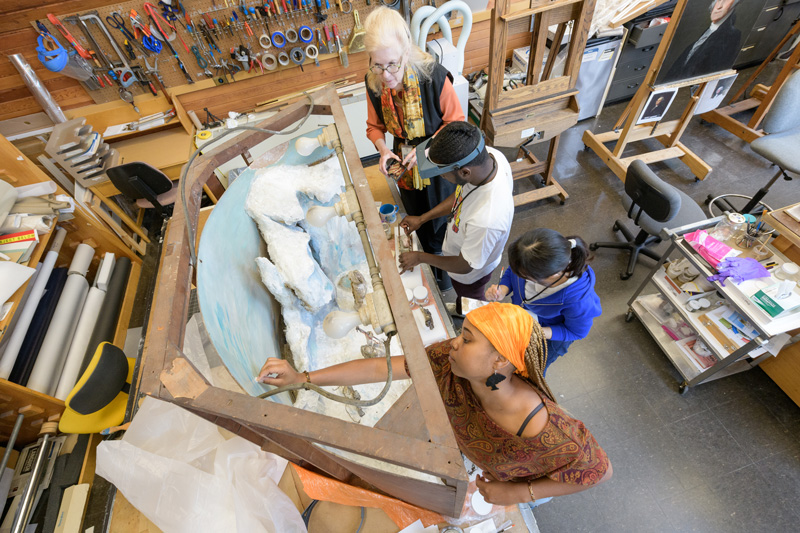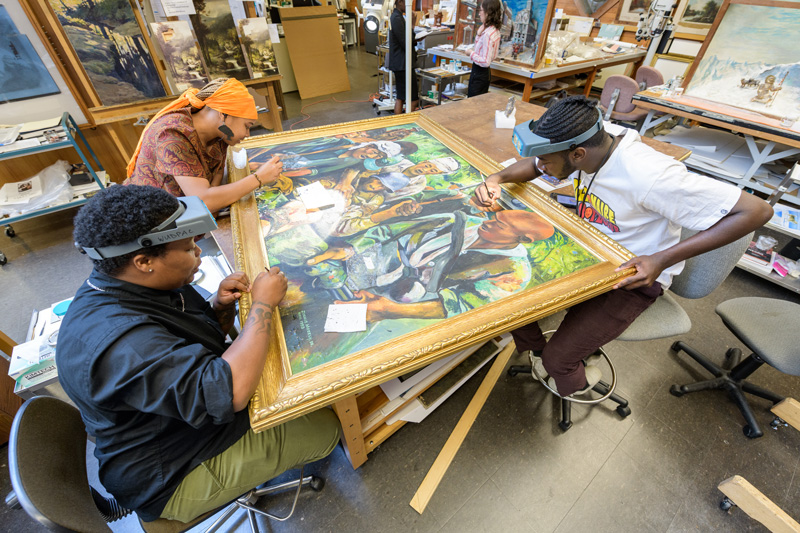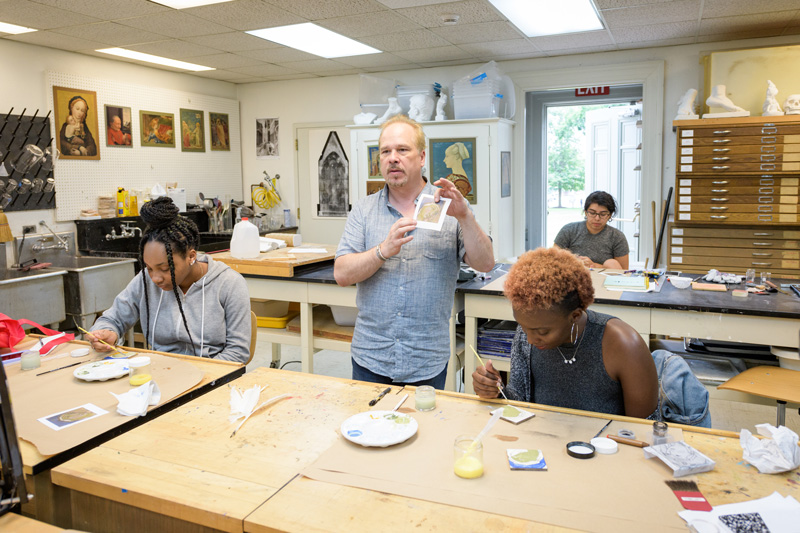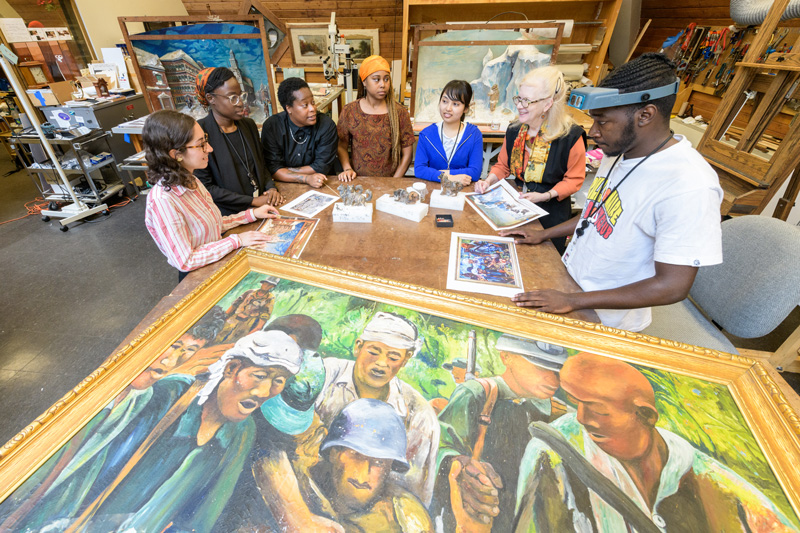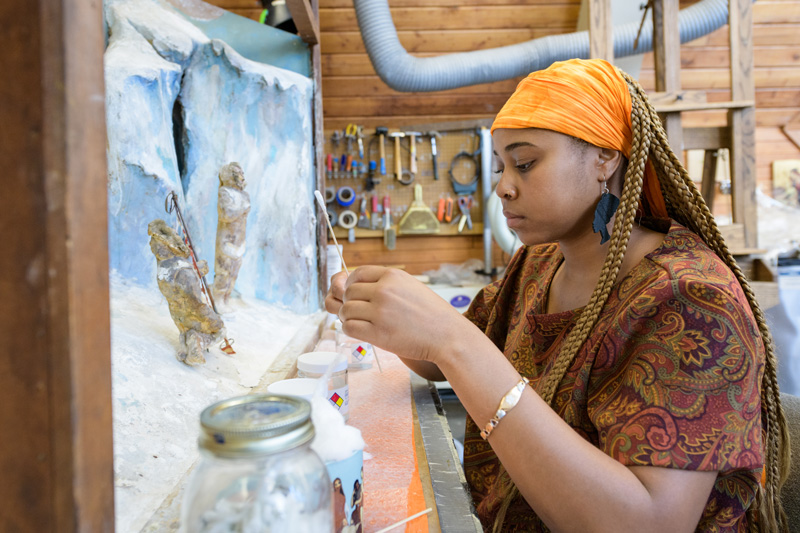

Preserving culture
Photos by Evan Krape July 24, 2018
Program focuses on art conservation, professional diversity
The 13 students from historically black colleges and universities (HBCUs) who came to the University of Delaware for a special program in art conservation this summer had remarkably varied backgrounds.
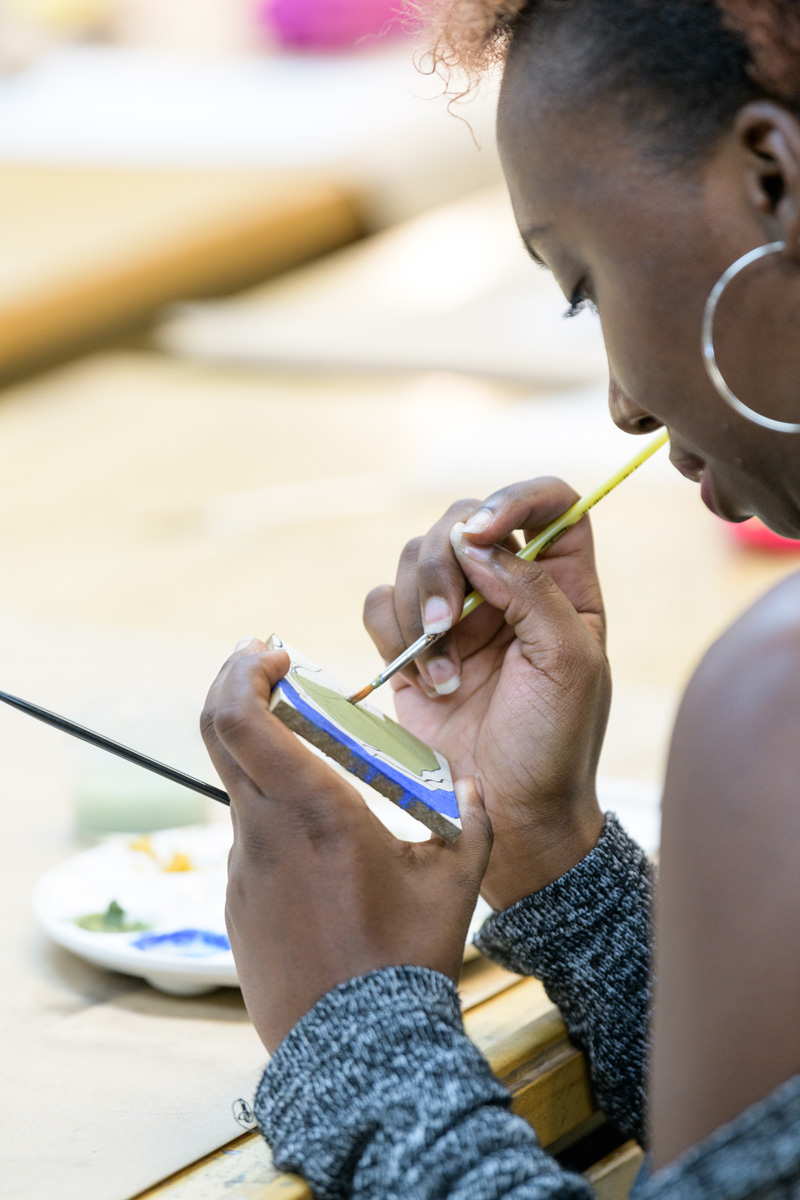
The group included a business administration student who fell in love with art after taking her first elective, a psychology and political science major now participating in a leadership development program, a graphic designer and painter, a 15-year resident of Japan and a decorated military combat photographer.
But they shared at least two things: They wanted to learn more about the field of art conservation, and all came highly recommended by their home institutions.
“This is an impeccable group of kids,” said Kristin DeGhetaldi, a UD master’s and doctoral alumna who co-taught the students’ introductory class. “They’re all very accomplished.”
The program, supported by the Samuel H. Kress Foundation and offered in collaboration with the HBCU Alliance of Museums and Art Galleries, is designed to expose talented students to art conservation as an academic discipline and a potential career.
Specifically, the initiative seeks to encourage members of underrepresented groups to consider the profession, which is severely lacking in diversity. According to research by the Andrew W. Mellon Foundation, only 1.5 percent of cultural-heritage professionals nationwide are African American.
“The field of art conservation needs us,” said program participant Chanise Epps, an Air Force veteran who is majoring in art at Texas Southern University. “I feel like this is a monumental moment for the field, because people are recognizing the need for diversity.”
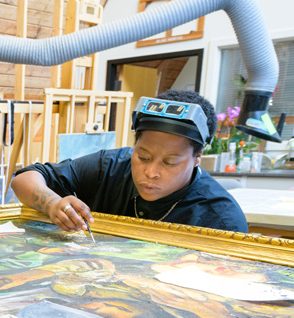
With more diversity in the profession, Epps said, conservators will benefit from sharing a wide range of perspectives, and collections at HBCUs and similar institutions will be less likely to be overlooked.
This year’s “Introduction to Practical Conservation” program began with a one-week course taught in UD’s Old College. After that, the group was divided among three different conservation labs for two weeks of experiential learning.
Five of the students remained in Delaware for the hands-on sessions, working in the labs at Winterthur Museum under the guidance of Joyce Hill Stoner, who is the Rosenberg Professor in Material Culture at UD. Other members of the original group finished the program at the Smithsonian American Art Museum in Washington, D.C., and Fisk University in Nashville, Tennessee.
During the first week, DeGhetaldi and Brian Baade, assistant professor of art conservation, introduced students to such topics as the examination and analysis of paintings and materials, the use of technology in conservation and the preservation of cultural artifacts from textiles to photographs.
A hands-on workshop one day gave students the opportunity to use 14th-century materials and methods to duplicate a detail from an Italian Renaissance painting. They used egg tempera paint — water-based pigments mixed with egg yolk, a common material before oil paints became popular — and practiced the time-consuming techniques needed when applying multiple layers of paint and letting each dry before continuing.
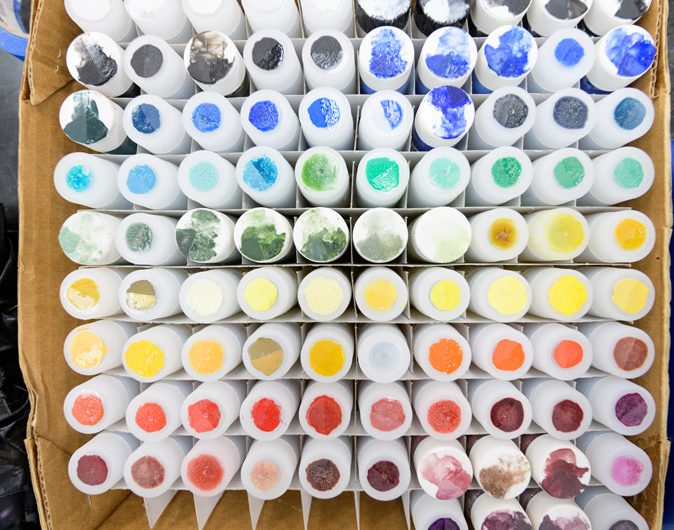
“I do this activity with my [UD] undergraduate classes, too,” Baade said. “It helps them develop an appreciation for an old medium.”
At Winterthur for the final two weeks of the program, students worked on a painting and two dioramas, all damaged and in need of conservation treatment. The dioramas, owned by Tuskegee University, were among more than 30 that were made in 1940 to showcase events from African and African American history.
Meaghan Hall, an art and business major from Fisk University, was working one day on a diorama depicting an expedition to the North Pole by African American explorer Matthew Henson and fellow explorer Robert Peary. After cleaning the background, which she said initially had a kind of yellowish film covering the surface, Hall was examining other damage.
On the figure of Henson, the hood of his parka once had rabbit fur trim, but only a few small tufts now remained. And the American flag the explorers had been shown planting in the snow toppled over during shipment and crumbled into a pile of small fragments of red, white and blue fabric.
“We’re deciding the best way to repair it,” Hall said. “I’ve learned so much in such a short time doing this, and I’ve learned how important this kind of work is.
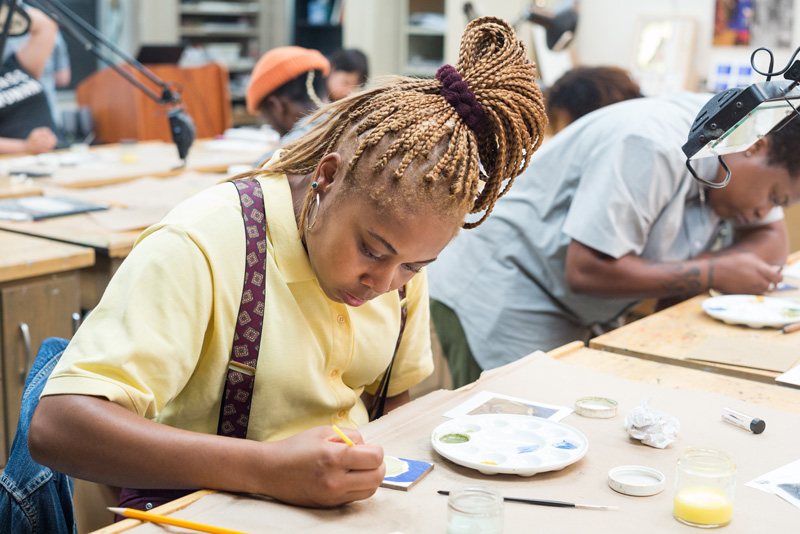
“Now I think about my own art: What’s going to happen to it in 50 years?”
In addition to the dioramas, the students had the opportunity to work on an oil painting by Jimmie Mosely of a wounded U.S. Marine during the Korean War. The 41-by-59-inch canvas had apparently been stored upright at one time when it was damaged by water, causing the paint to crack and flake.
For Chanise Epps, who was awarded medals for her work under fire as an Air Force photographer in Afghanistan in 2010, the painting was especially compelling. Mosely painted it from a photograph by Life magazine photojournalist David Douglas Duncan.
“I definitely feel a connection with this painting,” Epps said. “When you’re in combat, capturing those moments is so important. I think I was meant to work on this.”
The Tuskegee dioramas
The dioramas on which the students worked at Winterthur were made for the 1940 “American Negro Exposition” in Chicago, which celebrated the 75th anniversary of the end of slavery in the U.S.
In all, 33 dioramas were created by 70 African American artists, depicting various scenes from throughout history of African people and those of African descent, spanning ancient Egypt through World War I. After the exposition closed, some dioramas were lost, while 20 are now owned by Tuskegee University.
Over the years, and especially when the 5-foot dioramas were being transported, they sustained varying degrees of damage, Stoner said.
The dioramas that were the focus of the students in Delaware this year depicted the 1770 Boston Massacre, where African American Crispus Attucks became the first American killed in the Revolutionary War, and an expedition to the North Pole by explorers Matthew Henson, who was African American, and Robert Peary.
Stoner and two interns are carrying out more work on the dioramas this summer, and a group of undergraduates will continue to work on one in the fall. After conservation work is completed, the dioramas will be returned to Tuskegee.
Contact Us
Have a UDaily story idea?
Contact us at ocm@udel.edu
Members of the press
Contact us at 302-831-NEWS or visit the Media Relations website

